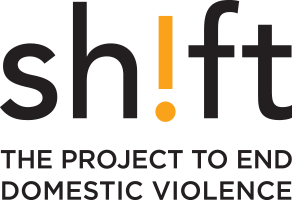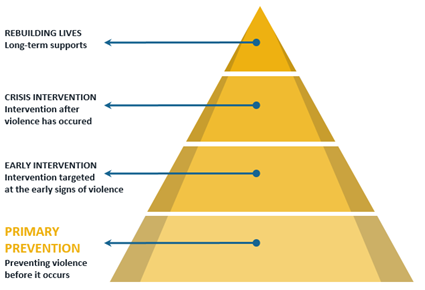Primary prevention means changing the cultural and structural conditions that create opportunities for perpetrators to commit violence while eliminating risk factors and building protective factors to stop initial perpetration of domestic and sexual violence.[1] This means, if we want to stop producing perpetrators of violence, we must transform our cultures (i.e., our values, beliefs, and social norms) and our institutions, laws, policies, and practices (i.e., structures) that create or enable them.[2] Primary prevention is long-term social change work that should involve every citizen.[3]
Primary prevention is a unique and crucial way of addressing domestic and sexual violence because it is our chance to promote safety and wellbeing instead of having to repair the damage after violence has occurred. Primary prevention involves upstream efforts to improve social conditions so that people will not become perpetrators and will not inflict violence on anyone in the first place.
When we miss our chance for primary prevention and the risk of violence is already present, we implement initiatives that mitigate that risk through early interventions, known as secondary prevention. When violence is already happening and people are in crisis, we implement initiatives to stop violence through crisis intervention, known as tertiary prevention. Tertiary prevention also involves rebuilding the lives of both survivors, perpetrators and their families. Survivors receive long-term supports that help them heal, improve their health, find safety, and access all the necessary resources, such as housing, education, employment, and social networks. Perpetrators also receive supports to help them take responsibility for the harm they have caused, be accountable, heal, repair, and prevent the transmission of violence across generations.



